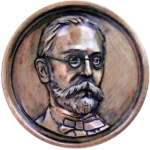W opracowaniu
Aktualny numer
Numery specjalne
Archiwum
O czasopiśmie
Redakcja
Rada Redakcyjna
Recenzenci
Instrukcja redakcyjna
Zasady etyki publikacyjnej
Zasady recenzowania
Ghostwriting
Prawa autorskie i polityka Open Access
Klauzula informacyjna RODO – dla autorów artykułów zgłoszonych do publikacji w kwartalniku „Komunikaty Mazursko-Warmińskie”
Kontakt
Cennik
PROJEKTY
O istocie gromadkarstwa mazurskiego
Data publikacji online: 20-07-2019
Data publikacji: 20-07-2019
KMW 2019;304(2):218-242
SŁOWA KLUCZOWE
DZIEDZINY
STRESZCZENIE
After the Reformation Masurians as subjects of the rulers of the first evangelical state in the world became
Lutherans. Over time, the inhabitants of the southern areas of Easy Prussia and the so- called Lithuania Minor
felt the lack of the deepened spirituality, which they did not find in the evangelical church. Through the settled
in Gąbin (Gumbinnen) exiled from the area of Salzburg pietist Evangelists in Masuria, “The six books on True
Christianity” by John Arndt appeared. The book, after the Bible and the Small Catechism of Luther became the
most popular among people of Masuria. The first piety movements appeared in Masuria in the county of Nidzica
and Szczytno at the turn of the 18th and 19th centuries. However their true upturn took place from the 1840s. It
manifested itself in running home services, prayer meetings- so-called “beads” and increased activity of travelling
preachers. In the seventies and eighties of the nineteenth century, The Gromadkar movement comprised between
30 and 80% of the Masurian population. The centre of the Masurian clusters was located near Szczytno, Pisz and
Mrągowo. Registered in 1885 by the Prussian Lithuanian Christopher Kukat , the East Prussian Evangelical Prayers
Association which with the help of its bilingual (German Lithuanian) paper Pakajaus Paslas/ Friedens- Bote gave
the organizational framework to the East Prussian clusters. At the turn of 19th and 20th centuries, the Gromadkar
movement reached its apogee, also spreading among the Mazurian workers’ communities in the Ruhr. Since the
First World War, there has been a gradual stifling of the movement, which in the Nazi era entered agonal phase.
The key to understanding the world of clusters is the “Six Books on True Christianity” by John Arndt, in which he
creates a kind of bridge between Luther’s teachings and the writings of the Rhine mystics of Master Eckhart, John
Tauler and Henry Suzo, giving Mazurians directions for spiritual growth. It was supposed to rely on “Six Books”
to deny yourself, to reject your own ego, to seek contact with God, indicating as the goal the union with God.
The uniqueness of the Gromadkar movement consisted in going beyond the Lutheran principle of “justification
by faith” and entering the ground of Christian mysticism unknown to the Evangelical doctrine, which happened
through the work of Arndt. An additional aspect that opens up in this context is the Slavic and Lithuanian spirituality and the sensitivity of the crowd, without which undoubtedly it would not be possible to practice mysticism
on the basis of the Evangelical religion.
Udostępnij
ARTYKUŁ POWIĄZANY
Przetwarzamy dane osobowe zbierane podczas odwiedzania serwisu. Realizacja funkcji pozyskiwania informacji o użytkownikach i ich zachowaniu odbywa się poprzez dobrowolnie wprowadzone w formularzach informacje oraz zapisywanie w urządzeniach końcowych plików cookies (tzw. ciasteczka). Dane, w tym pliki cookies, wykorzystywane są w celu realizacji usług, zapewnienia wygodnego korzystania ze strony oraz w celu monitorowania ruchu zgodnie z Polityką prywatności. Dane są także zbierane i przetwarzane przez narzędzie Google Analytics (więcej).
Możesz zmienić ustawienia cookies w swojej przeglądarce. Ograniczenie stosowania plików cookies w konfiguracji przeglądarki może wpłynąć na niektóre funkcjonalności dostępne na stronie.
Możesz zmienić ustawienia cookies w swojej przeglądarce. Ograniczenie stosowania plików cookies w konfiguracji przeglądarki może wpłynąć na niektóre funkcjonalności dostępne na stronie.




